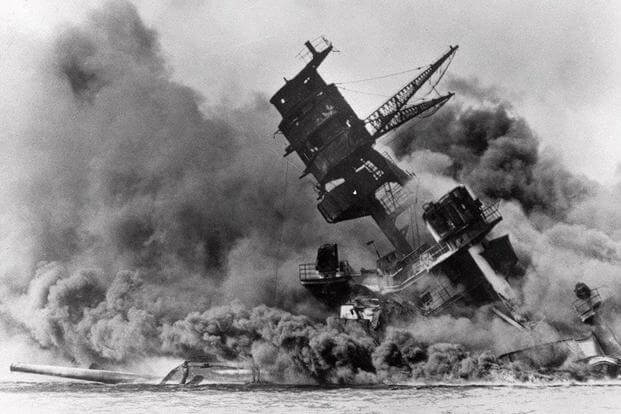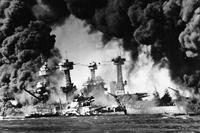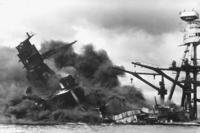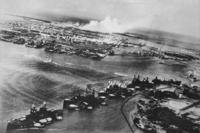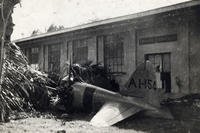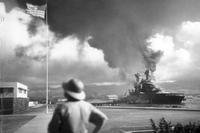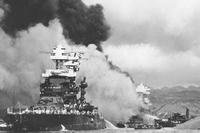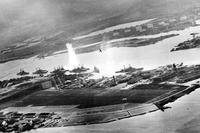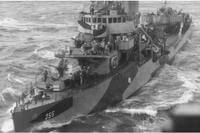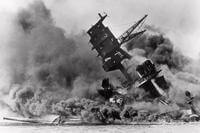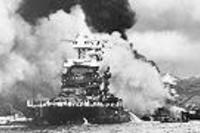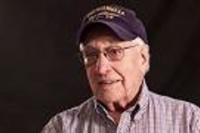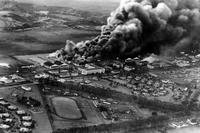The Japanese attack on the U.S. naval base at Pearl Harbor in Hawaii, which catapulted the United States into World War II, killed more than 2,400 American sailors and civilians and wounded 1,000 more.
Japanese fighter planes also destroyed or damaged almost 20 naval ships during the attack.
But the U.S. sailors and civilians didn't standby without putting up a fight.
Here are seven Pearl Harbor heroes you’ve never heard about.
1. Phil Rasmussen, Who Raced into His Plane to Attack Japanese Zero Fighters
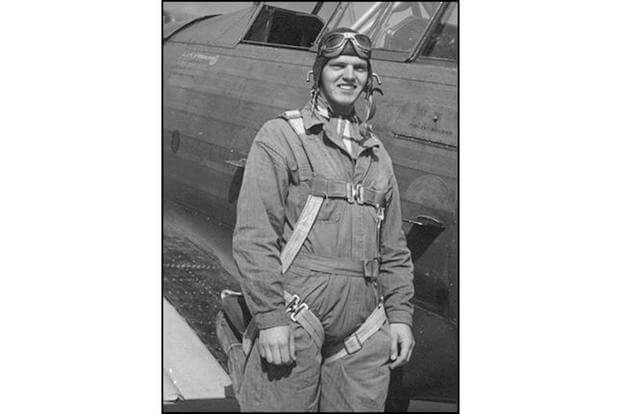
Lt. Phil Rasmussen was one of four American pilots able to get in the air and engage Japanese fighters during the attack on Pearl Harbor.
When the attack was launched, Rasmussen was still in his pajamas when he ran out to the flight line and jumped in a then-old Curtiss P-36A Hawk fighter plane -- the only U.S. planes the Japanese hadn't yet taken out.
Once in the air, Rasmussen shot down one Japanese Mitsubishi A6M2 Zero fighter plane and damaged another before he was targeted by two more.
The two Japanese fighters shot up his plane and took out his radio, hydraulic lines and rudder cables, but he was able to fly away and hide in the clouds before landing without brakes, a rudder or tailwheel.
Rasmussen received the Silver Star for his actions and retired from the Air Force in 1965.
Sources: US Air Force, We Are The Mighty
2. Doris Miller, Who Fired a Machine Gun at Attacking Fighters
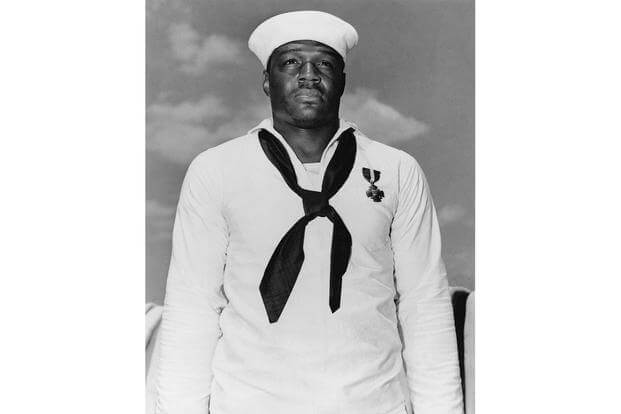
Cook Third Class Doris Miller was stationed on the USS West Virginia battleship when the Japanese attacked.
Awake at 6 a.m., Miller was collecting laundry when the attack was launched. He went to his battle station, which was an anti-aircraft battery magazine in the middle of the ship, only to find it had been taken out by a torpedo.
Miller then went to the deck, where he was assigned to carry away wounded sailors before he was ordered to the bridge to help the mortally wounded Mervyn Sharp Bennion (who later received the Medal of Honor).
After helping deliver ammunition to two .50 caliber Browning anti-aircraft machine gun crews, and without any weapons training, he manned one of the guns himself and fired until the ammunition was spent.
"It wasn't hard," Miller later said.
"I just pulled the trigger and she worked fine. I had watched the others with these guns. I guess I fired her for about 15 minutes. I think I got one of those Jap planes. They were diving pretty close to us."
He received the Navy Cross for his actions, the first given to an African American.
Miller was killed in 1943 while serving on the escort carrier USS Liscome Bay, which was sunk by a Japanese torpedo.
Source: US Navy
3. Annie G. Fox, Who Worked Ceaselessly to Care for the Wounded
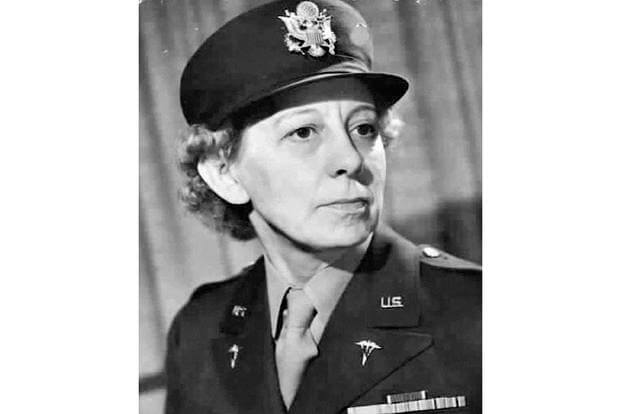
First Lieutenant Annie G. Fox was the head nurse at the hospital at Hickam Field, which was Hawaii's main army airfield and bomber base, when the attack on Pearl Harbor was launched.
Fox "administered anesthesia to patients during the heaviest part of the bombardment, assisted in dressing the wounded, taught civilian volunteer nurses to make dressings, and worked ceaselessly with coolness and efficiency, and her fine example of calmness, courage and leadership was of great benefit to the morale of all with whom she came in contact," according to her Purple Heart medal citation.
Fox was the first U.S. service woman to receive the Purple Heart, which she received for her actions during the attack.
At the time, the U.S. military awarded Purple Hearts for "singularly meritorious act of extraordinary fidelity or essential service." When the requirement of being wounded was added, her Purple Heart was replaced with the Bronze Star, since she had not been wounded.
Fox was promoted to the rank of major before retiring from the service in 1945.
4. George Walters, a Crane Operator Who Warned Sailors of the Incoming Attack
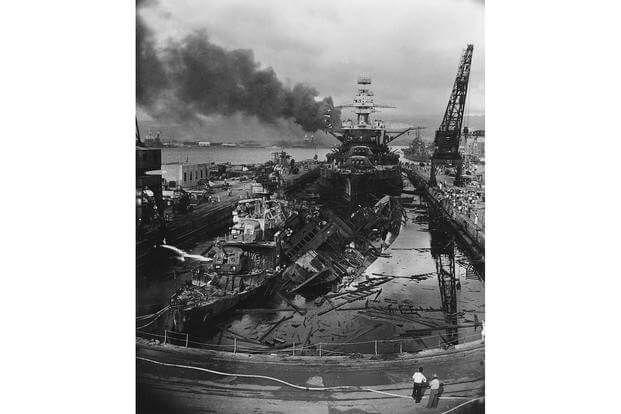
George Walters was a civilian who operated a huge crane next to the USS Pennsylvania battleship at Pearl Harbor.
He was 50 feet up in the crane when the attack was launched. He was one of the first Americans to see the Japanese planes coming, and alerted the sailors aboard the Pennsylvania.
Walters then repeatedly swung the crane back and forth to shield the ship from Japanese fighter planes as U.S. sailors aboard the Pennsylvania attempted to return fire.
But the sailors manning the guns on the battleship had trouble seeing the Japanese planes because they were in dry dock.
"The water had been pumped out, dropping their decks to a point where the high sides of the drydock blocked most of the view," author Walter Lord wrote in his book, "Day of Infamy."
So Walters used the crane's boom to point out incoming Japanese planes.
"After a 500-pound bomb exploded nearby, damaging the crane and stunning Walters, he nearly fell from the crane. But Walters had moved the crane just in time to avoid a direct hit from the bomb, which left a 17-foot crater," according to the Honolulu Star-Bulletin.
Walters has since been credited by many with helping save the ship. He operated cranes until 1950 and retired in 1966.
Source: Honolulu Star-Bulletin, History.com
5. Cmdr. Cassin Young, who saved his USS Vestal repair ship
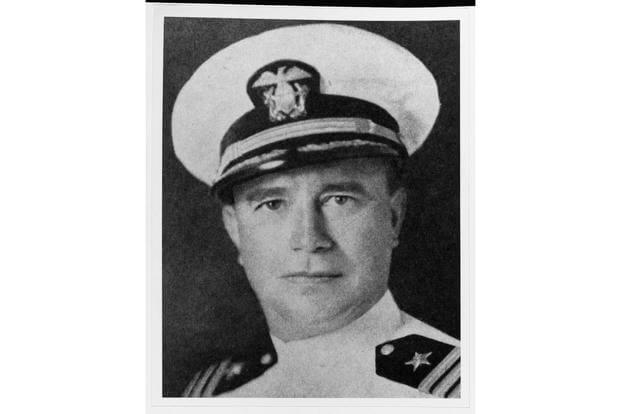
Cmdr. Cassin Young commanded the USS Vestal repair ship during the attack on Pearl Harbor.
Young was in his cabin in the Vestal when the attack was launched. He ran to the deck, where he organized sailors to fire the ship's three-inch guns at the Japanese planes overheard.
But Young was blown overboard, along with 100 other sailors, when the forward magazine of the famed USS Arizona battleship, which was next to the Vestal, was hit and exploded.
The Vestal's second in command ordered the remaining sailors to abandon ship, but Young swam through the oil slick water and climbed back aboard.
“Where the hell do you men think you are going?” Young yelled at the sailors abandoning ship, shouting at them to go to their stations and get the ship underway.
The Vestal eventually made it out into open waters. Damaged and on fire, it ran aground.
Young later received the Medal of Honor for his actions and was promoted to captain of the heavy cruiser USS San Francisco. He was killed aboard the San Francisco during the Guadalcanal Campaign.
Source: US Navy, Milwaukee Journal-Sentinel
6. Chief Boatswain Edwin Joseph Hill, who saved shipmates from Japanese fighters
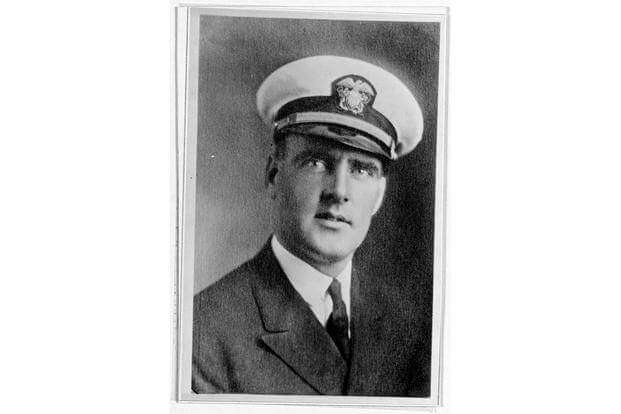
Chief Boatswain Edwin Joseph Hill was stationed on the USS Nevada battleship when the attack on Pearl Harbor began.
As Japanese planes fired down on the ship from above, Hill jumped into the harbor's waters and climbed ashore to release the Nevada from its mooring. He then jumped back in and swam toward the Nevada, which was moving to open water, and climbed back aboard the battleship.
But with the Nevada alone in the water, the ship was an obvious target, and would have blocked the harbor if destroyed.
With Japanese fighters attacking the Nevada, Hill directed other sailors to take cover behind the gun's turrets. Many of the sailors later credited him with saving their lives.
When Hill tried to drop anchor during the second wave of attack, a Japanese bomb hit the bow and he was killed.
Hill was awarded the Medal of Honor for his actions.
Source: Pearl Harbor Visitors Bureau
7. Ensign Herbert C. Jones, who led sailors to deliver ammunition by hand
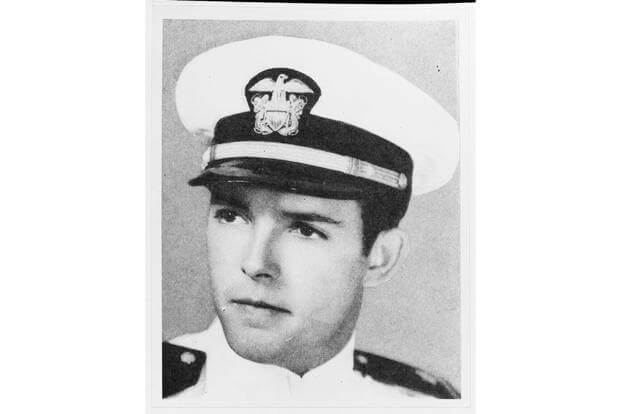
Ensign Herbert C. Jones was stationed aboard the USS California battleship during the attack on Pearl Harbor.
Jones had just taken over for the junior officer of the deck when the attack was launched.
After a torpedo damaged the mechanical hoist that loaded the ship's anti-aircraft guns, Jones led a group of sailors to deliver the ammunition by hand.
Jones was in a compartment on the third deck, passing ammo up a ladder to the gun battery when a bomb struck the second deck, injuring him critically.
The Nevada was taking on water, and threatened with catching fire from burning oil in the water, when an abandoned ship order was given.
Two sailors carried Jones up from the compartment, which had caught fire, but at one point, got stuck.
“Leave me alone! I’m done for. Get out of here before the magazines go off,” Jones said.
Marine Corps Pvt. Howard Haynes, who had been confined when the attack was launched, later credited Jones with saving his life.
“God, give me a chance to prove I’m worth it,” Haynes said.
Jones was posthumously awarded the Medal of Honor.
Source: Defense Department, "Pearl Harbor: Why, How, Fleet Savage and Final Appraisal"
Keep Up With the Best in Military Entertainment
Whether you're looking for news and entertainment, thinking of joining the military or keeping up with military life and benefits, Military.com has you covered. Subscribe to the Military.com newsletter to have military news, updates and resources delivered straight to your inbox.
